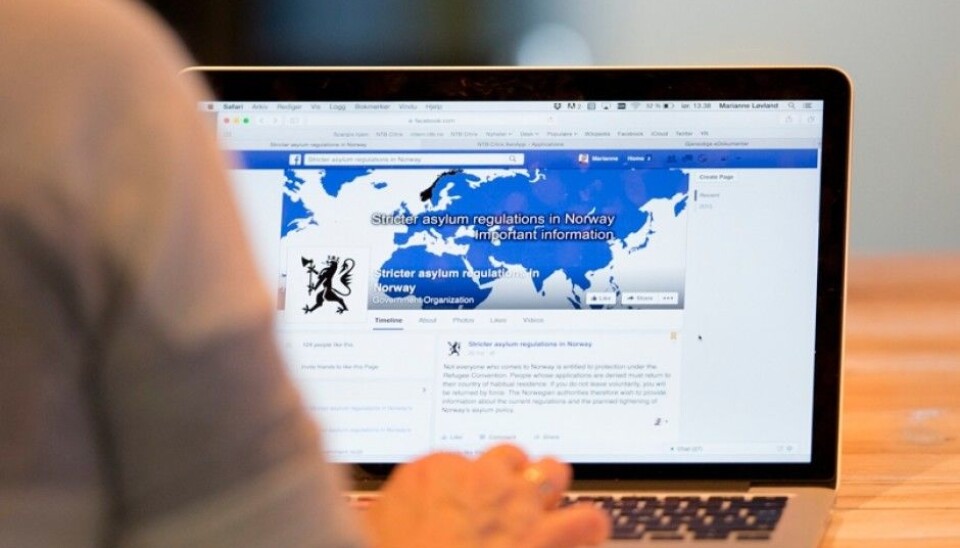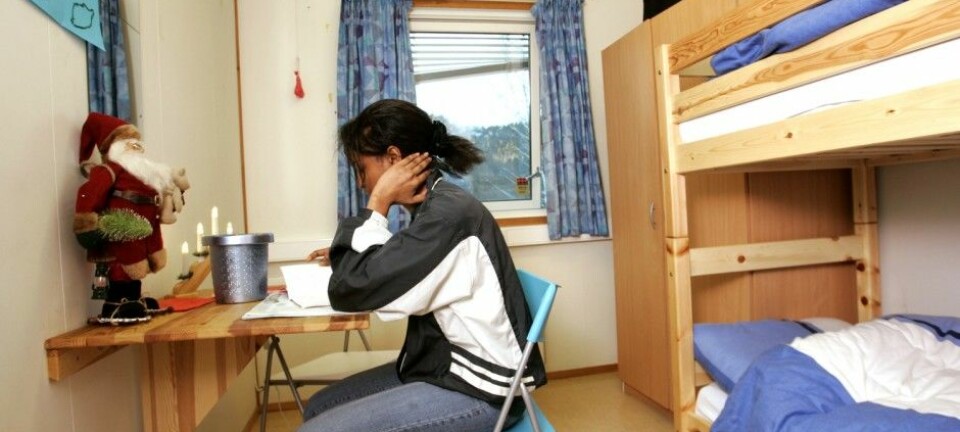
Social media campaign for asylum seekers draws angry trolls
The Norwegian authorities launched a risky campaign to slow the number of asylum seekers in 2015. The campaign reached more than 11 million people.
Abandoned bicycles in Storskog, a northern Norwegian town on the border with Russia, may seem odd in the context of asylum seekers.
But of the 31,000 asylum seekers who came to Norway in 2015, a flood came on bicycle from Russia, because that was the only legal way for migrants to cross the border.
At the same time, images of abandoned bicycles piling up on the Norwegian-Russian border were even featured in The New York Times, helping to feed the perception that the Norwegian government, like other governments in Europe, was being overwhelmed by the migrant crisis.
The Norwegian government’s response was to launch a campaign via Facebook. The target was potential male asylum seekers from Afghanistan, Eritrea and Ethiopia who would very likely have no grounds for being granted refugee status in Norway.
In the end, the government reached more than 11 million people with its paid Facebook campaign. Now, a group of researchers at the Institute for Social Research has evaluated the campaign, including its ethical aspects.
A strong message that went far
The main message of the Facebook campaign was to tell asylum seekers that it was not worth risking their life and paying a lot of money to smugglers when the likelihood of being refused asylum was quite substantial.
The campaign, called “Stricter asylum regulations in Norway”, was designed by the Ministry of Justice and Public Security as an official statement of policy that was both neutral and accurate.
Asylum seekers are good at finding information on social media. There are also many rumours about which countries are best for asylum seekers.
Norway is among the countries that has had a good reputation.
The Facebook campaign reached 11.5 million people, according to statistics from the social media site. The Facebook statistics also show the campaign reached the groups the authorities wanted to reach. The videos with the message that it was not worth it for certain groups of asylum seekers to come to Norway were seen 21 million times.
Had to do something fast
Record numbers of asylum seekers came to Norway in the autumn of 2015, with an average of 2000 registered asylum arrivals every week. The pressure was on the Norwegian Ministry of Justice and Public Safety to do something.
"We had to get online and fast," says communications adviser Guttorm Aanes.
Facebook is an emotional medium. It is effective in reaching people. But public authorities do not have much experience using it.
The researchers behind the new report say that traditionally it is difficult for authorities to communicate, not just inform. In addition, it can be difficult for authorities to control the content when the communication platform they use is controlled by a third party, like Facebook.
Aanes and his colleagues at the ministry had to grapple with all this during the autumn of 2015.
"We are aware of the risk of using social media. But we didn’t have enough time to weigh it that carefully,” he said.
Hate speech and serious threats
At first, the Facebook page "Stricter asylum regulations in Norway" was open to public comment, sharing and "likes".
The reaction was almost immediate. But it did not come from the liberal left, as you might think. The “like” button was used primarily by the right, including the extreme right.
The comments got stronger over time. “Some early commentators posted hate speech and serious threats,” one civil servant told the researchers. The researchers reported that “when one inappropriate comment was deleted, others appeared elsewhere in the threads.”
Commentators used the Facebook page to claim there was an Islamic invasion of Europe, with terrorists and child abusers flooding over Europe’s borders.
This is not the kind of information a government ministry wants on its Facebook page.
Shut down after two days
The ministry set up 24-hour monitoring of the page, with the idea that people be given an opportunity to comment. Hateful or inappropriate speech was deleted. But the flood of ugly commentary was so great that controlling it became impossible.
After two days, all comments had to be deleted and the page was closed to comments.
“We wanted to have a fact-based page. We really didn’t expect the comments to play an important role,” the researchers reported one civil servant as saying. “Good old fashioned one-way communication. That’s what we expected, except with the added value of people being able to ‘like’ and share.”
Norway’s approach unique
The researchers also looked at how the Norwegian campaign was different from campaigns in other countries.
Six other countries that they studied all used social media as well. Norway, however, was the only country that relied on social media as its main communication channel, via Facebook.
Germany debunked myths about how good it was for asylum seekers to come to the country. But they posted this information on billboards and on signs on public transport in Afghanistan.
Campaign effectiveness still unknown
The Norwegian campaign was probably much cheaper than the German campaign, according to the communications adviser from the Ministry of Justice and Public Safety. It cost less than NOK 100,000.
And Norway went from one of the largest recipients of asylum seekers in Europe to one of the countries that received the fewest migrants. Nevertheless, whether or not this was the result of the Facebook campaign remains to be studied.
-------------------------------------
Read the Norwegian version of this article at forskning.no
































